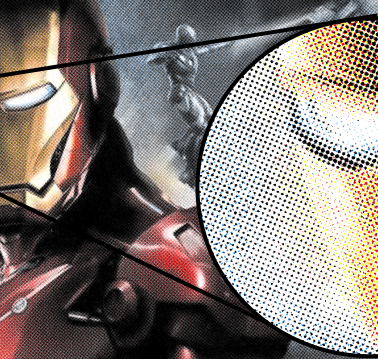Simulate process color separations in screen printing is the process of dividing or separating the color in a color image or graphic into specific color channels or separation images refereed as color separations. The color separations are then screen printing to reproduce the full color image or graphic as a screen printed image.
The color separations must be converted to halftone, black and white images that simulate continuous tone or greyscale images even though the images are only black and white.
The halftone images are then burned or applied to screen printing screens and printed as color(s), white and black.
Then the simulated process color separations are printed with the colors from the simulated process separations colors to reproduce the image or art as a simulated full color image or graphic.
Below is an image of Iron Man that has been separated in the Ink Seps simulated process color separation application. Notice all the channels are grey scale images.
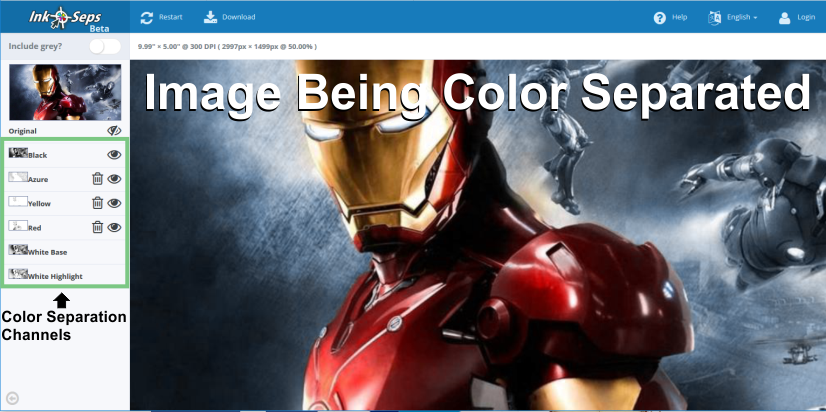
Below are the simulated process color separations from the Ink Seps separation application. Each color plus the white base, white highlight and black are grey scale images.
Red Color Separation

White Base Separation
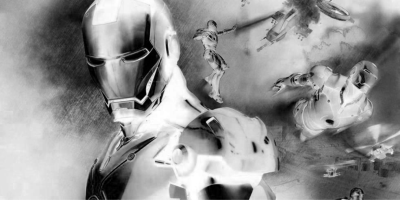
Yellow Color Separation

White Highlight Separation
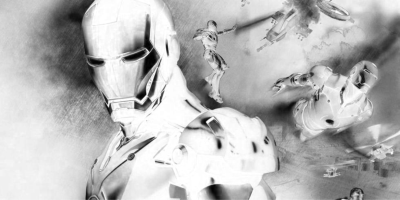
Azure Color Separation

Black Separation

The grey scale simulated process color separation images are then converted to halftones before the screens are burned for screen printing.
Red to Halftones
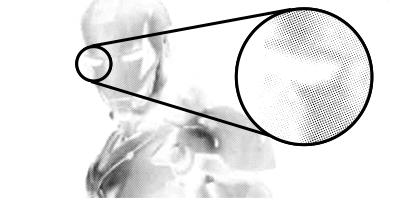
Whitebase to Halftones
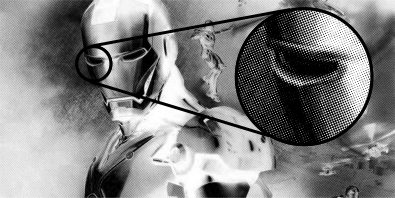
Yellow to Halftones
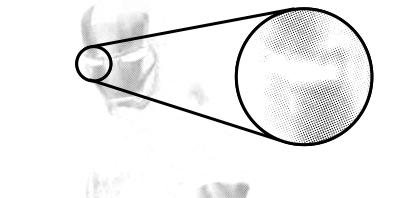
White Highlight to Halftones
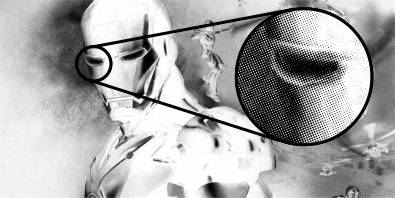
Azure to Halftones

Black to Halftones
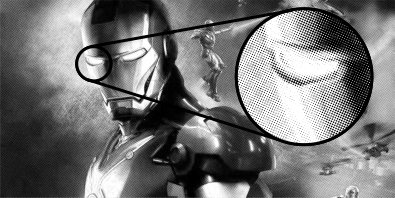
After the images have been converted to halftones they will be screen printed by using the inks of colors in the simulated process color separations.
Red Color Halftones
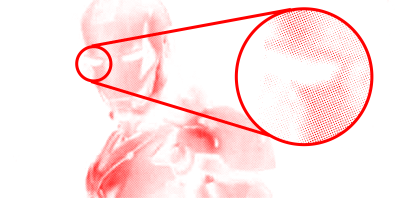

Yellow Color Halftones

White Highlight Halftones



NOTE - The white Base and white highlight are repressed as black above as white would not show up on the web page.
When the simulated process color separations with halftones are screen printed. The printed halftones of the color separations cause the color(s) or inks to blend together. Resulting in a simulated continuous tone full color image of the original art or image.
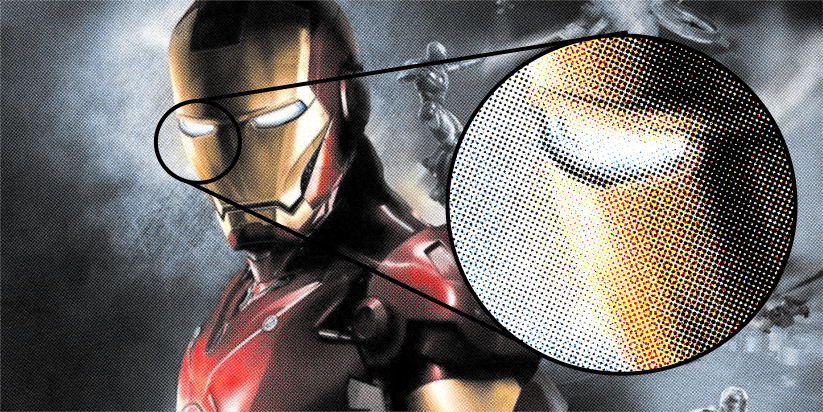
In the above image you can see a representation of the halftones in the enlarged circle.
Looking at the halftone simulated process print from a distance your eyes cannot make out the small dots and will perceive a full color image with many colors, tints, shades and tones. Even though the image is printed with a limited number of actual colors.

